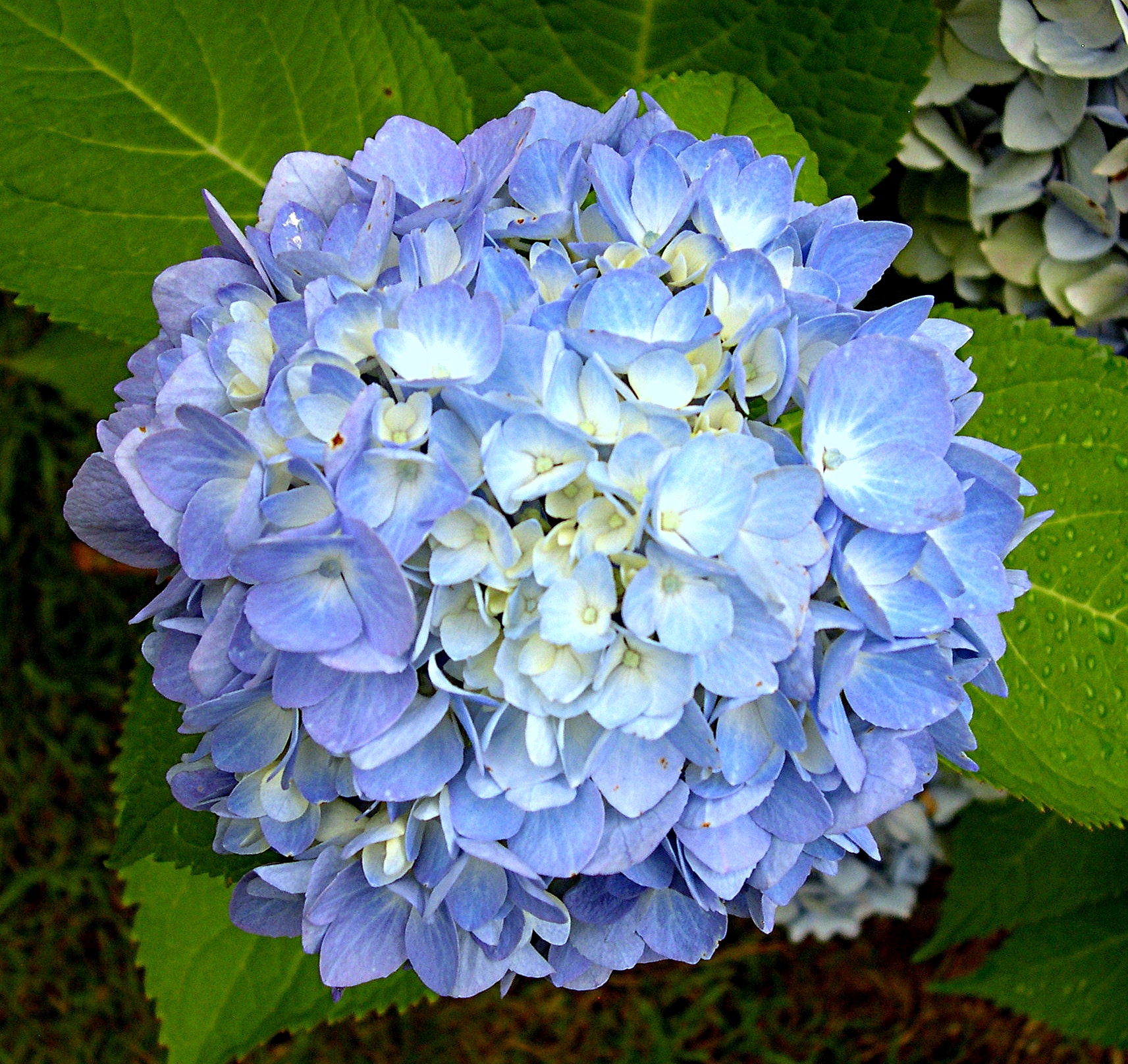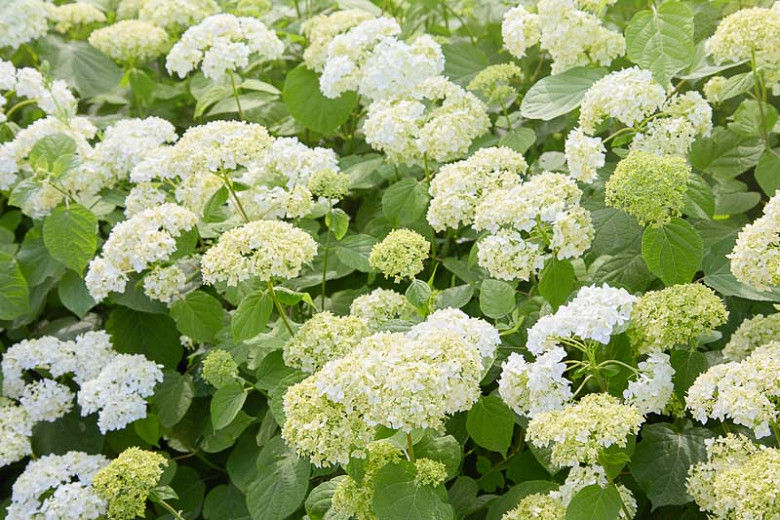How To Grow And Care For Hydrangea Macrophylla
Introduction
Hydrangea macrophylla, also known as bigleaf hydrangea, is a popular flowering shrub that is known for its large, showy blooms. These hydrangeas come in a variety of colors, including blue, pink, purple, and white. They are relatively easy to grow and care for, making them a good choice for gardeners of all skill levels.
In this blog post, we will discuss the basics of growing and caring for Hydrangea macrophylla. We will cover topics such as choosing the right location, planting, watering, fertilizing, pruning, and overwintering. We will also provide some tips for troubleshooting common problems.
Main Content
Choosing the Right Location
Hydrangea macrophylla prefers to grow in partial shade. Too much sun can scorch the leaves, while too much shade will prevent the flowers from blooming their best. A location that receives morning sun and afternoon shade is ideal.
The soil should be moist and well-drained. Hydrangeas do not tolerate wet feet, so make sure the soil has good drainage. If your soil is sandy or gravelly, you may need to add some compost or other organic matter to improve drainage.
Planting
Hydrangea macrophylla can be planted in the spring or fall. If you are planting in the spring, wait until the soil has warmed up to at least 60 degrees Fahrenheit. If you are planting in the fall, plant at least six weeks before the first frost.
Dig a hole that is twice as wide and as deep as the root ball of the hydrangea. Amend the soil with compost or other organic matter. Place the hydrangea in the hole and backfill with soil. Water thoroughly.
Watering
Hydrangea macrophylla needs to be watered regularly, especially during the first year after planting. Water deeply once a week, or more often if the weather is hot and dry. Mulch around the base of the plant to help retain moisture.
Fertilizing
Hydrangea macrophylla should be fertilized once a year in the spring. Use a balanced fertilizer, such as 10-10-10. Apply the fertilizer according to the directions on the label.
Pruning
Hydrangea macrophylla should be pruned in the spring, after the flowers have finished blooming. Prune to remove dead, diseased, or damaged branches. You can also prune to shape the plant.
Overwintering
In most climates, Hydrangea macrophylla is hardy to USDA zones 4-9. However, in colder climates, the plant may need to be protected from the cold. In the fall, before the first frost, mulch the base of the plant with several inches of leaves or straw. You may also need to wrap the plant with burlap or other protective material.
Troubleshooting
Leaf scorch: If the leaves of your hydrangea are turning brown, it is likely due to too much sun. Move the plant to a location that receives more shade.
Bud blast: Bud blast is a condition that occurs when the flower buds of a hydrangea are damaged by cold weather. If your hydrangea is in a cold climate, you can protect the bud by covering the plant with a burlap sack or other protective material.
Pests and diseases: Hydrangeas are relatively resistant to pests and diseases. However, they can be susceptible to aphids, spider mites, and powdery mildew. If you see any pests or diseases on your hydrangea, treat it immediately with an appropriate pesticide or fungicide.
Conclusion
Hydrangea macrophylla is a beautiful and easy-to-grow shrub that can add a touch of elegance to any garden. With proper care, your hydrangea will bloom for many years to come.
If you're looking for a beautiful and easy-to-care-for plant, look no further than the hortensia macrophylla. This hardy hydrangea is native to Japan and Korea, and it's known for its large, colorful blooms. Hortensia macrophylla comes in a variety of colors, including blue, pink, purple, and white. The color of the blooms can be affected by the pH of the soil, so you can experiment to find the perfect color for your garden.
Hortensia macrophylla is a relatively low-maintenance plant. It prefers full sun or partial shade, and it needs well-drained soil. Water the plant regularly during the growing season, and fertilize it once a month with a balanced fertilizer.
If you're interested in learning more about hortensia macrophylla, I recommend visiting . This website has a wealth of information about the plant, including its history, care, and varieties. You can also find photos of hortensia macrophylla in bloom, so you can see for yourself how beautiful this plant can be.
FAQ of hortensia macrophylla
1. What is Hortensia macrophylla?
Hortensia macrophylla, also known as bigleaf hydrangea, is a popular garden plant that is native to East Asia. It is known for its large, showy flowers that can be blue, pink, purple, or white. Hortensia macrophylla is a relatively easy plant to care for, but it does require some specific conditions in order to thrive.
2. What are the different colors of Hortensia macrophylla flowers?
The color of Hortensia macrophylla flowers is determined by the acidity of the soil. In acidic soil, the flowers will be blue. In alkaline soil, the flowers will be pink. If the soil is neutral, the flowers will be white.
3. How do I change the color of my Hortensia macrophylla flowers?
If you want to change the color of your Hortensia macrophylla flowers, you can adjust the acidity of the soil. To make the flowers blue, add aluminum sulfate to the soil. To make the flowers pink, add lime to the soil.
4. How do I care for Hortensia macrophylla?
Hortensia macrophylla needs full sun to partial shade and well-drained soil. It is important to water the plant regularly, especially during the summer months. Hortensia macrophylla is also susceptible to pests and diseases, so it is important to inspect the plant regularly and treat any problems as soon as possible.
5. How do I propagate Hortensia macrophylla?
Hortensia macrophylla can be propagated by taking cuttings or by dividing the plant. To take cuttings, cut a 6-inch stem from the plant in the spring or early summer. Remove the lower leaves from the cutting and dip it in rooting hormone. Plant the cutting in a pot of well-drained soil and keep the soil moist. The cutting should root in about 4-6 weeks. To divide the plant, dig up the plant in the spring or fall and carefully separate the roots. Replant the divisions in separate pots or in the garden.
Image of hortensia macrophylla
5 different images of "hortensia macrophylla" from Pinterest:
This variety of hydrangea is known for its large, blue flowers. It is a deciduous shrub that can grow up to 6 feet tall. Blue Moon hydrangeas are hardy in zones 4-9.
Annabelle hydrangea is another popular variety. It is known for its large, white flowers that bloom in summer. Annabelle hydrangeas are hardy in zones 3-9.
Limelight hydrangea is a variety that is known for its changing colors. The flowers start out green, then turn pink, and then finally blue. Limelight hydrangeas are hardy in zones 3-9.
Pink Annabelle hydrangea is a variety that is similar to Annabelle, but with pink flowers. Pink Annabelle hydrangeas are hardy in zones 3-9.
Strawberry Sundae hydrangea is a variety that is known for its striped flowers. The flowers start out white, then turn pink, and then finally have red stripes. Strawberry Sundae hydrangeas are hardy in zones 3-9.





Post a Comment for "How To Grow And Care For Hydrangea Macrophylla"